Home » Journal Articles » Thoughts & Opinions » Coast Chronicles: Ready to Rock
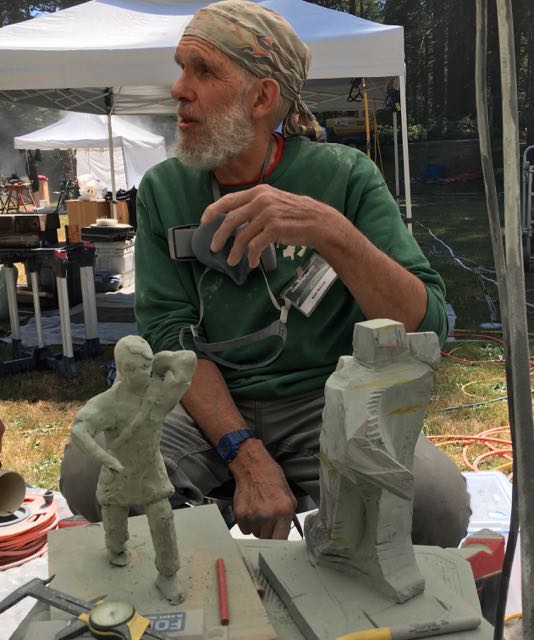
I love stones large and small. I have them lining my walkways, in my pockets, cluttering my dashboard and window sills. But the idea of taking a tool and cutting into one to create something entirely mine had not occurred to me, until this past week.
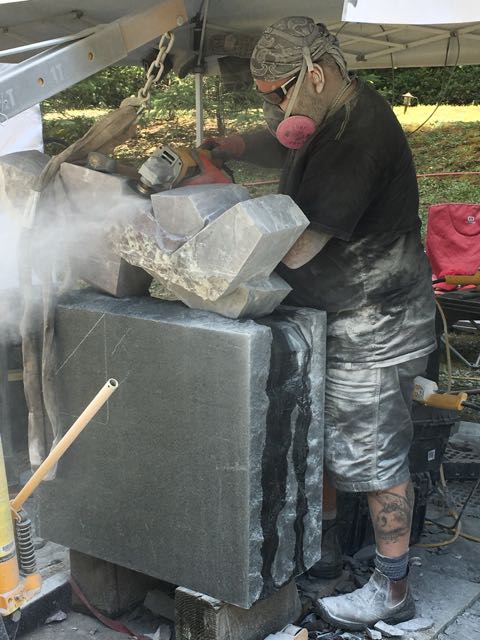
I had the opportunity to visit the Northwest Stone Sculptors Association annual symposium, this year taking place at Pilgrim Firs outside of Port Orchard. This is the 30th anniversary and many of the NWSSA members have been along for the whole ride (www.carve.new-site.xyz ). I had a vague concept of what I might see, but I was still surprised by the volume of stone dust; the noise of saws, blades and chisels; the miles of cords stringing out across the work field linking the easy-up tents to generators and power sources; and, more than anything else, the welcoming attitude of every single stone carver present. And even as memorable as the carvers are, the stones also stick in my mind.
Olivine, basalt, jade, serpentine, alabaster, marble, calcite, jet, quartz, onyx, pipestone, rhyolite, polymictic breccia! For a poet, just the names of the rocks are magical. To see them first in the raw, then shaped, textured and polished, seemed on the order of alchemy.
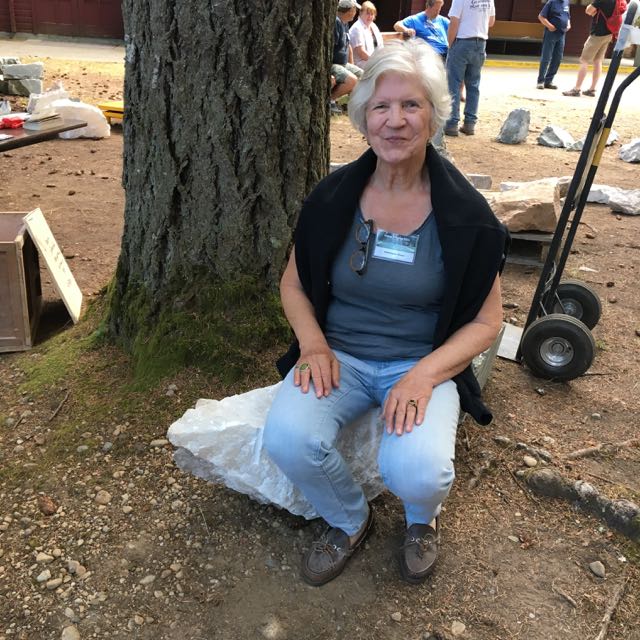
Every stone type has unique properties; and every piece of stone its own personality, often hidden until the carver begins his or her interior exploration. Imagine you’ve got a solid, incredibly dense hunk of stone in front of you (see the Mohs scale of hardness here: http://geology.com/minerals/mohs-hardness-scale.shtml ). Where do you start? As long-time carver Ruth Muessler says (https://www.facebook.com/Skulpt-Pop-up-Art-Gallery-1876666865884730/), “Get your ego out of the way and let the stone tell you what to do.” Then, over time, through chipping, scraping and grinding, you bring forward a shape. The word patience comes to mind.
The music of stone
Cracks can be the bane of a stone carver’s project. One figure I noticed had a reattached head, representing a big whoops that must have been devastating to the carver. Often sections of rock—connecting an arm, a leg, or any particularly fragile portion of the carving to the body of the stone—are left in place until the last moment lest an indiscriminate tap ruin the entire effort. Not all carvings are classical body-forms, of course; there were smooth organic shapes, intricate knots, flowers using different component rocks, abstracts. No wonder carvers are so accepting—the world of stone sculpture is as diverse as we are.
The big and little of it
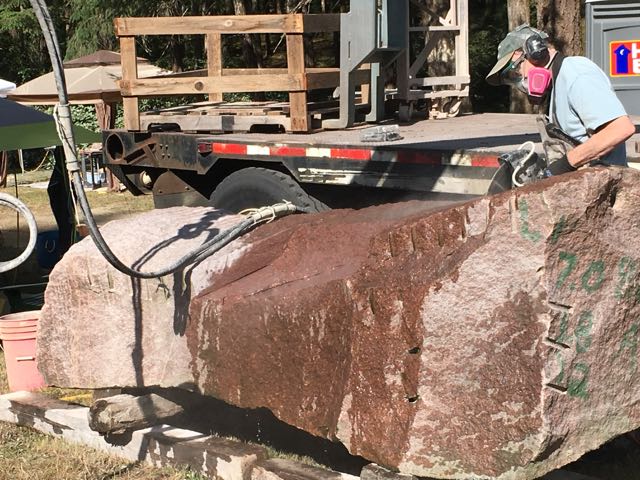
The main commons was the cafeteria—can’t beat caffeine and meals—and the big open field was action central. The level of creative energy was tangible. Every carver—around 90 were present—had an open tent with table, tools, personal accouterments and a unique project in the works. There was a new carvers’ tent, complete with mentors; a lapidary area for jewelry; and a jade workshop supervised by a visiting New Zealander. I wandered at will, asking questions and watching.
The scale of the work was as diverse as the carvers. Ruth showed me a pebble the size of the last joint on a little finger. “This was a piece of gravel that caught my eye,” she said. She’d carved it into an exquisite angel with wings of black and white.
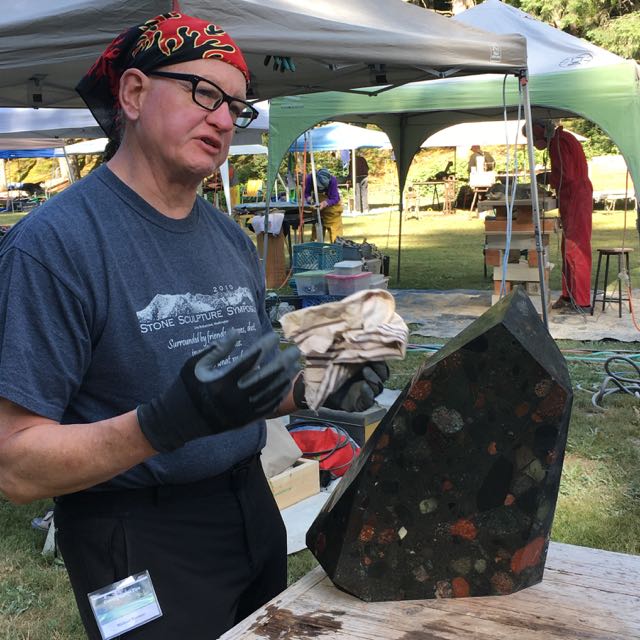
Down the way Michael Yeaman (https://www.michaeleyeaman.com ) was polishing up a stone with angular planes and smooth geometric cuts. His gleaming rock resembled a bold contemporary painting with multiple colors and shapes floating in a black sea. Michael, a geologist, is the go-to guy for information about stone type and origin.
“This is a polymictic,” he said. “It’s made up of many different rock types—there’s some granite, some shale, some marble, some jasper and a sandy matrix that trapped it all. It came from an old river in the Devonian about 430 million years ago from southeast Alaska.” Talking to Michael was like falling into a geology book.
I learned that we have a vast variety of rock types in our geologically-rich state. One morning a fellow named Nate arrived with a pickup truck of ordinary-looking river boulders. But, lo and behold, when cut open these were revealed to be Washington state jade: grey-green veering to smoky-blue. These native stones and stone-slices went for the tidy sum of $50 a pound!
All in the family
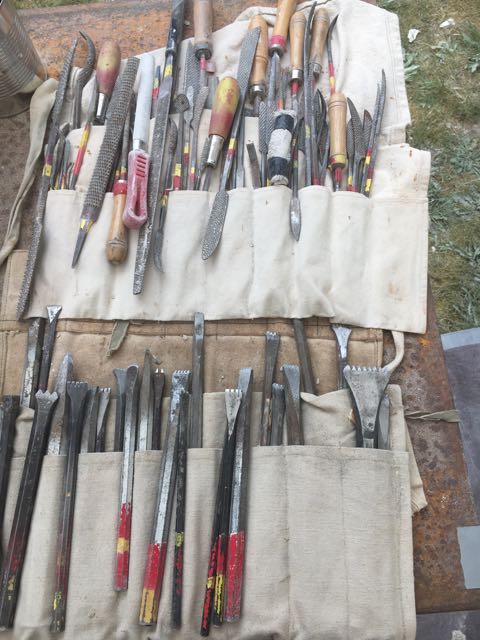
Stone carvers seem a hardy, happy bunch. They handle hammers and carbide-tipped steel chisels all day; or rotary saws, grinders, sandpaper and water to keep things cool. They lean into their work with feet firmly planted; thighs, shoulders and backs that swing into action in rhythm with the stone in front of them. Their hands, arms, faces, hair, shoes are covered in stone dust. They’re disguised in dust masks, long aprons, hats and boots. These masked creators come alive when faced with the subterranean products of our amazing Mother Earth. They’re coaxing art from one of the densest media on the planet.
Sitting around the table at mealtimes, carvers bounced from sharing rock-challenges and tool stories to personal topics. Every individual was part of the tribe, simply by being there.
One first-time arrival, Lisa Hammer (dear name phreaks, I am not making this up), said she’d been a painter and had tried other art forms but got it into her head to come to the symposium. “I was constantly picking up stones,” she said. “I have an affinity for them. I have big bowls of stones sitting around my house. Now I know what to do with them! As a kid I always wanted to go to a place like the mountains of the Pacific Northwest. So I decided to come. I feel like I’ve found my family.”
Thus the carvers welcome another into the fold. Rock on!
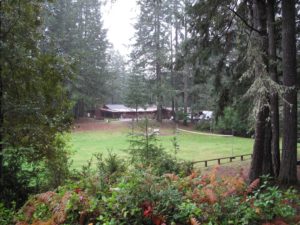


We need some kind of descriptive text here.